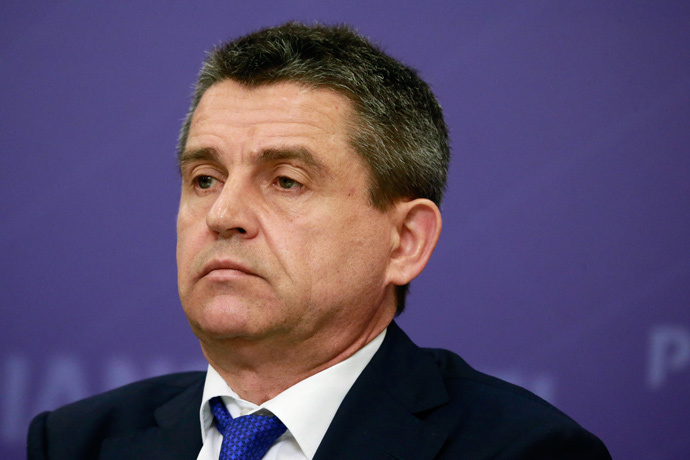Russian investigators reveal identity of key witness in MH17 crash
especiales

The man is currently under Russian state protection.

“As now there is new evidence of the reliability of the words of the witness, as well as various reports concerning the doubts of certain media outlets about the real existence of this witness, we decided to disclose [the name of the witness],” Investigative Committee spokesman Vladimir Markin said.

Agapov, a Ukrainian citizen, was serving as a military mechanic in the first squadron of the Ukrainian Air Force’s tactical aviation brigade.
According to Markin, the man “voluntarily crossed the state border of the Russian Federation and expressed a desire to cooperate with the Russian investigation.”
Agapov has testified that on July 17, 2014, a Ukrainian Sukhoi Su-25 jet aircraft piloted by one Captain Voloshin “set out for a military task,” Markin said.

The aircraft returned to the airfield with empty ammunition. To his colleagues, Voloshin said that the plane was "at the wrong time or in the wrong place,” said the Investigative Committee spokesman.
“Our jets were flying regularly,” Agapov said in his testimony. “When one returned, the pilot, Captain Voloshin, got out of the cockpit.” He added that, as Captain Voloshin walked away with the other pilots, Agapov heard him say: “That was the wrong plane.”
“In the evening we learned that a passenger Boeing was shot down that day,” the witness said.
He said that on that day, July 17, the soldiers together with Agapov were “servicing another jet, attaching its payload.”
“Nearby was Flight Control Officer Dyakin, Captain Voloshin and two other pilots. Dyakin asked Voloshin: ‘What happened with the plane?’ He said, ‘It was in the wrong place at the wrong time.’”
On Tuesday, Russian arms manufacturer Almaz-Altey announced the results of its own probe into the MH17 tragedy. They say that the crash could only have been caused by one of the missiles from BUK’s older line of defense systems, the BUK-M1. These missiles are widely deployed by a number of post-Soviet states, including Ukraine, but have been replaced by a newer model in Russia.
“If a surface-to-air missile system was used [to hit the plane], it could only have been a 9M38M1 missile of the BUK-M1 system,” Almaz-Antey said in a statement.
In the meantime, Almaz-Antey’s experts said they had not “theoretically” excluded the possibility that the Boeing was hit by another type of weapon, such as an air-to-air missile. They cautioned that that final conclusions could only be drawn after all the necessary forensic tests had been conducted by the official investigative commission.
The Malaysia Airlines flight MH17, with 298 passengers on board, crashed on July 17, 2014 in the Donetsk Region of eastern Ukraine. The Boeing was en route from Amsterdam to Kuala Lumpur, and the majority of its victims were Dutch citizens.
READ MORE: MH17 probe looking for witnesses to back ‘Buk missile’ scenario
Dutch forensic experts are leading the investigation into the causes of the tragedy. However, they have so far released only a preliminary report, in which they said that the plane “broke up in mid-air due to external damage.”














Add new comment